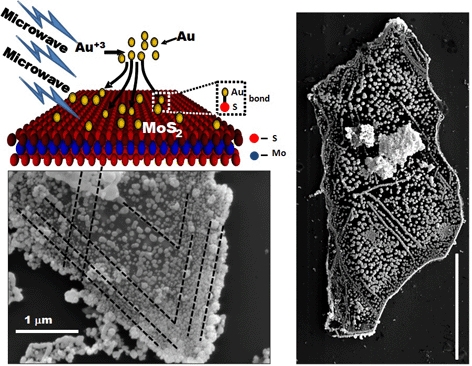Vikas Berry, William H. Honstead professor of chemical engineering, and his research team have studied a three-atom-thick material - molybdenum disulfide - and found that manipulating it with gold atoms improves its electrical characteristics. Their research appears in a recent issue of Nano Letters.
The research may advance transistors, photodetectors, sensors and thermally conductive coatings, Berry said in a statement. It could also produce ultrafast, ultrathin logic and plasmonics devices.
Berry’s laboratory has been active in the advancement of synthesis and properties of several next-generation atomically thick nanomaterials, such as graphene and boron-nitride layers, which have been applied for sensitive detection, high-rectifying electronics, mechanically strong composites and novel bionanotechnology applications.
‘Futuristically, these atomically thick structures have the potential to revolutionise electronics by evolving into devices that will be only a few atoms thick,’ Berry said.
For the latest research, Berry and his team focused on transistors based on molybdenum disulfide (MoS2), which was isolated two years ago. The material is made of three-atom-thick sheets and has recently shown to have transistor-rectification that is better than graphene, a single-atom-thick sheet of carbon atoms.
When Berry’s team studied molybdenum disulfide’s structure, they realised that the sulphur group on its surface had a strong chemistry with noble metals, including gold. By establishing a bond between molybdenum disulfide and gold nanostructures, they found that the bond acted as a highly coupled gate capacitor.

Berry’s team enhanced several transistor characteristics of molybdenum disulfide by manipulating it with gold nanomaterials.
‘The spontaneous, highly capacitive, lattice-driven and thermally-controlled interfacing of noble metals on metal-dichalcogenide layers can be employed to regulate their carrier concentration, pseudo-mobility, transport-barriers and phonon-transport for future devices,’ Berry said.
The work may improve future electronics, which will be ultrathin, Berry said. The researchers have developed a way to reduce the power that is required to operate these ultrathin devices.
‘The research will pave the way for atomically fusing layered heterostructures to leverage their capacitive interactions for next-generation electronics and photonics,’ Berry said. ‘For example, the gold nanoparticles can help launch 2D plasmons on ultrathin materials, enabling their interference for plasmonic-logic devices.’





Report highlights significant impact of manufacturing on UK economy
I am not convinced that the High Value Manufacturing Centres do anything to improve the manufacturing processes - more to help produce products (using...